July 4th, 2023
6minute read
At 2247 hours on 24 April 1980, a U.S.A.F.
The objective was to free 52 American hostages held by Iranian extremists.
The Rangers secured a nearby highway and stopped traffic as it was encountered.
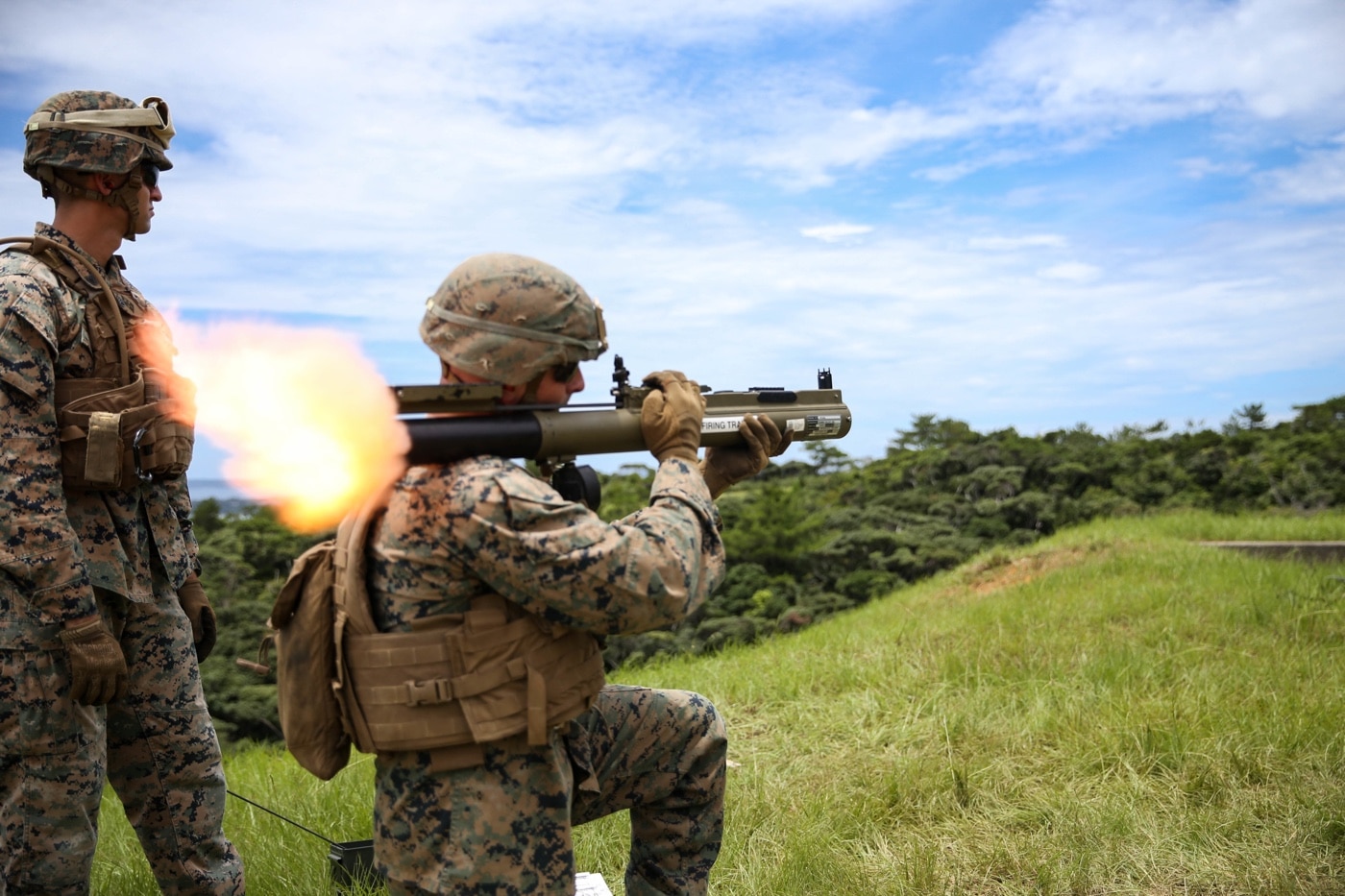
U.S. Marines with the 3rd Marine Division train with the M72 LAW at Camp Schwab, Okinawa, Japan. Image: Cpl. Donovan Massieperez/U.S.M.C.
It was later determined that the tanker was smuggling illicit gasoline.
In desperation, one of the Rangers unlimbered a shoulder-fired M72 Light Antitank Weapon (LAW).
Sighting the disposable rocket launcher in the dark using its luminescent sight, the Ranger center-punched the heavily-laden truck.
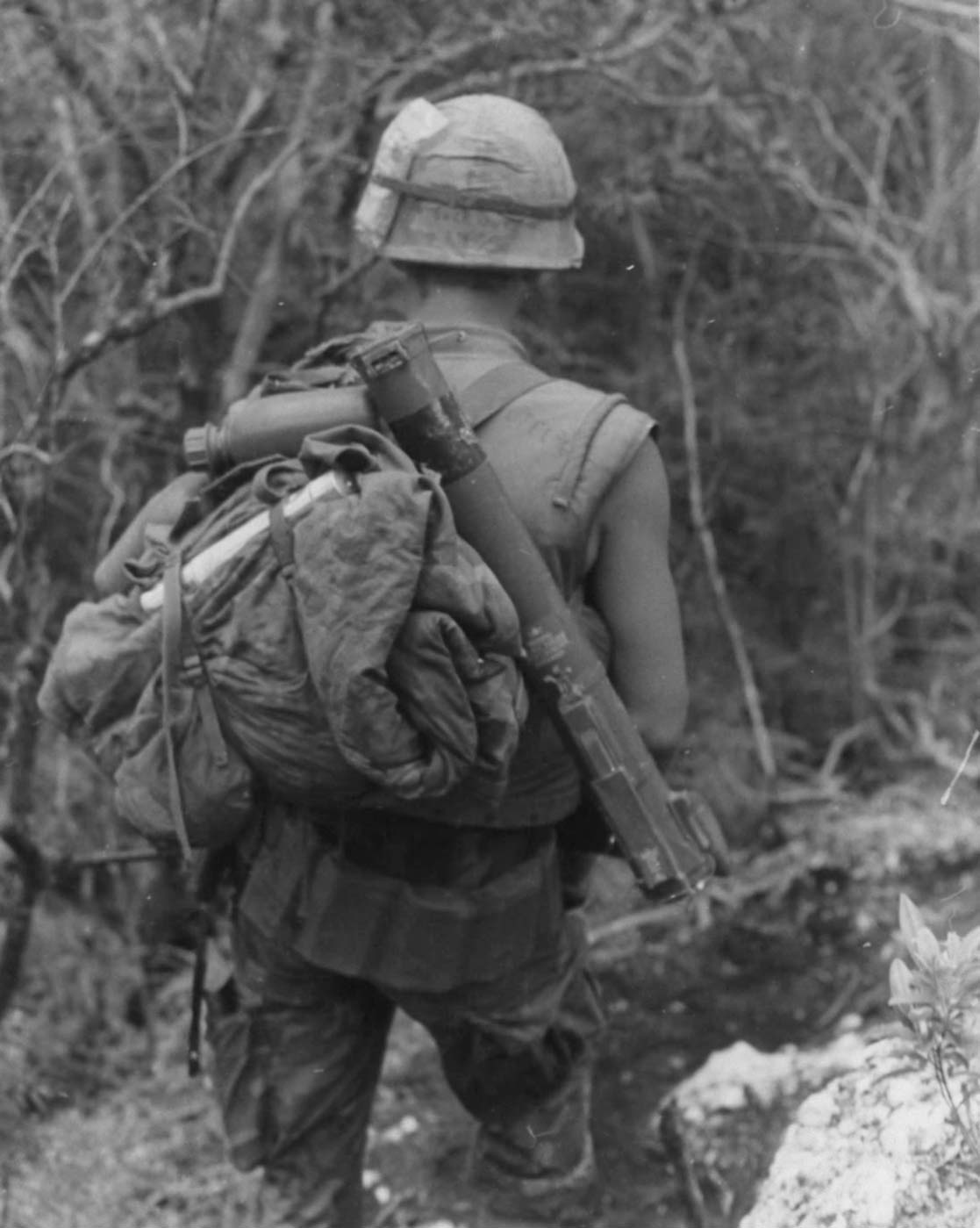
A U.S. Marine with the 1st Marine Division is on patrol with his unit south of the DMZ in Vietnam. On his back is a M72 LAW anti-tank rocket. Image: NARA
A passenger in the truck died in the attack, though the driver escaped in a follow-on pickup.
From that point, everything seemed to fall apart.
With only five mission-capable aircraft remaining, the decision was made to abort.
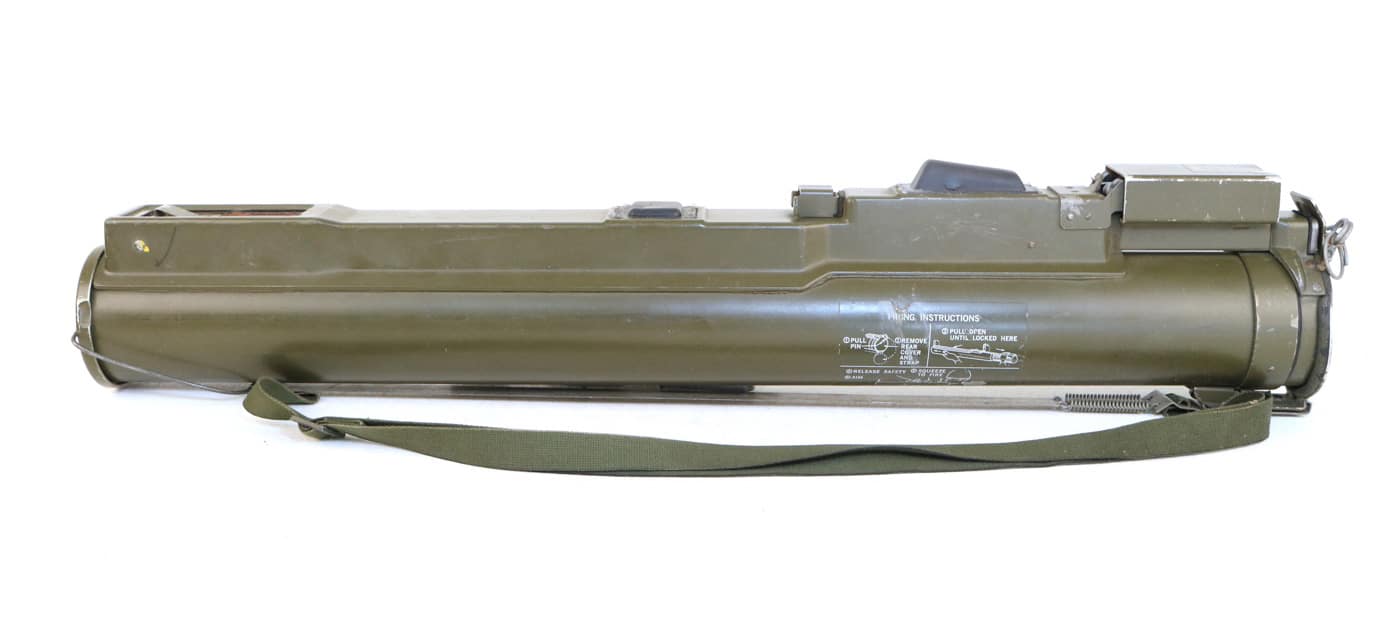
The M72 Light Antitank Weapon has been in service with U.S. forces since before the Vietnam War. It is a lightweight and effective man-portable tank-killing tool.
In the subsequent chaos, a helicopter taxied into an Air Force cargo plane and exploded.
Eight American troops died in the inferno, and another four were injured.
The mission was a humiliating failure.

A soldier with the 25th Infantry Division aims an M72 light anti-tank weapon during Exercise OPPORTUNE JOURNEY in October 1986. Image: Spc. Michael D. Evans/U.S. Army
Light Anti-Tank Weapon
But what about that LAW launcher?
Work on the M72 LAW, or Light Antitank Weapon, first began at Redstone Arsenal in 1959.
American needed an anti-armor weapon to counter the rapidly advancing tank technology developed by the Soviets.
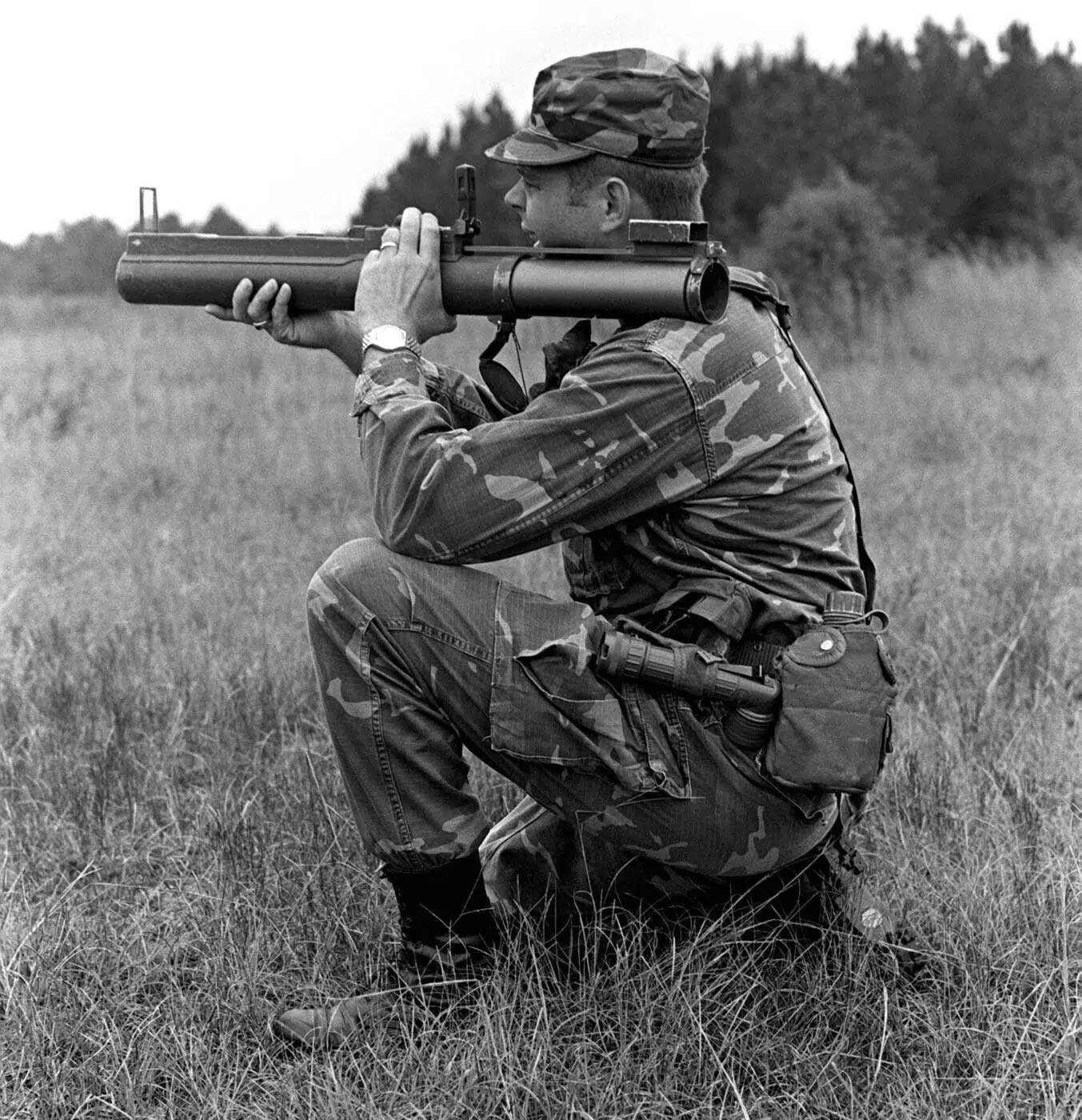
S.Sgt. Glen Chaunley demonstrates the proper method for firing an M72 light anti-tank weapon during a training exercise. Image: Airman 1st Class Reedy/U.S.A.F
The M72 consists of a disposable launcher that fires an unguided 66mm solid-fuel rocket.
The basic concept is essentially an arithmetic mean between the American bazooka and theGerman WWII-vintage Panzerfaust.
The latest M72A7 weighs 7.9 pounds and has a maximum effective range of 220 meters.
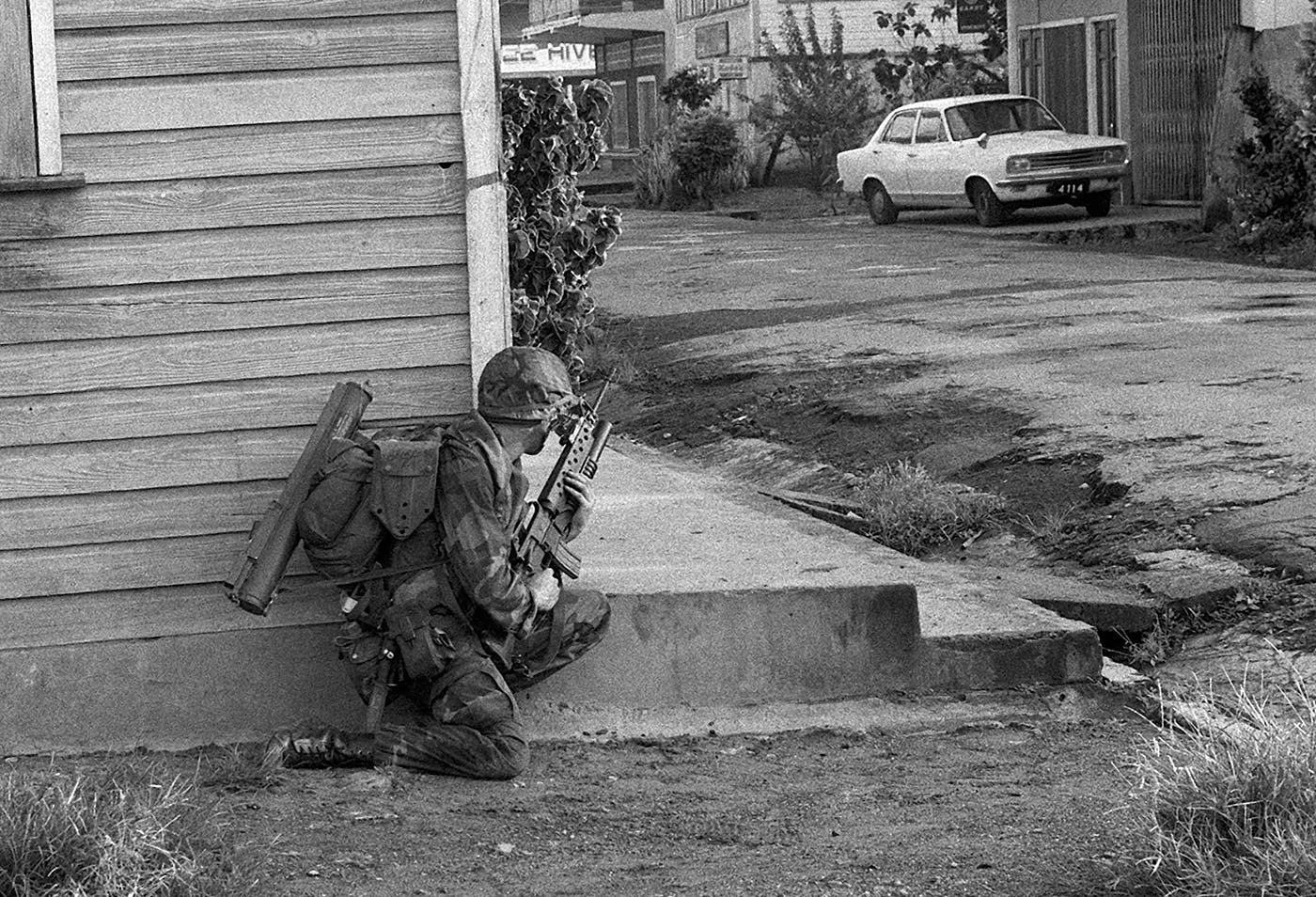
A Marine moves through the town of Grenville during Operation URGENT FURY. He is armed with an M16A1 rifle and is carrying an M72 anti-tank rocket launcher. Image: PH2 D. Wujcik/NARA
The point-initiated, base-detonated round travels at 480 feet per second.
A mechanical setback feature prevents the warhead from detonating unless it has been fired.
The LAW consists of a single consumable round of ammunition carried within a pair of nested telescoping tubes.
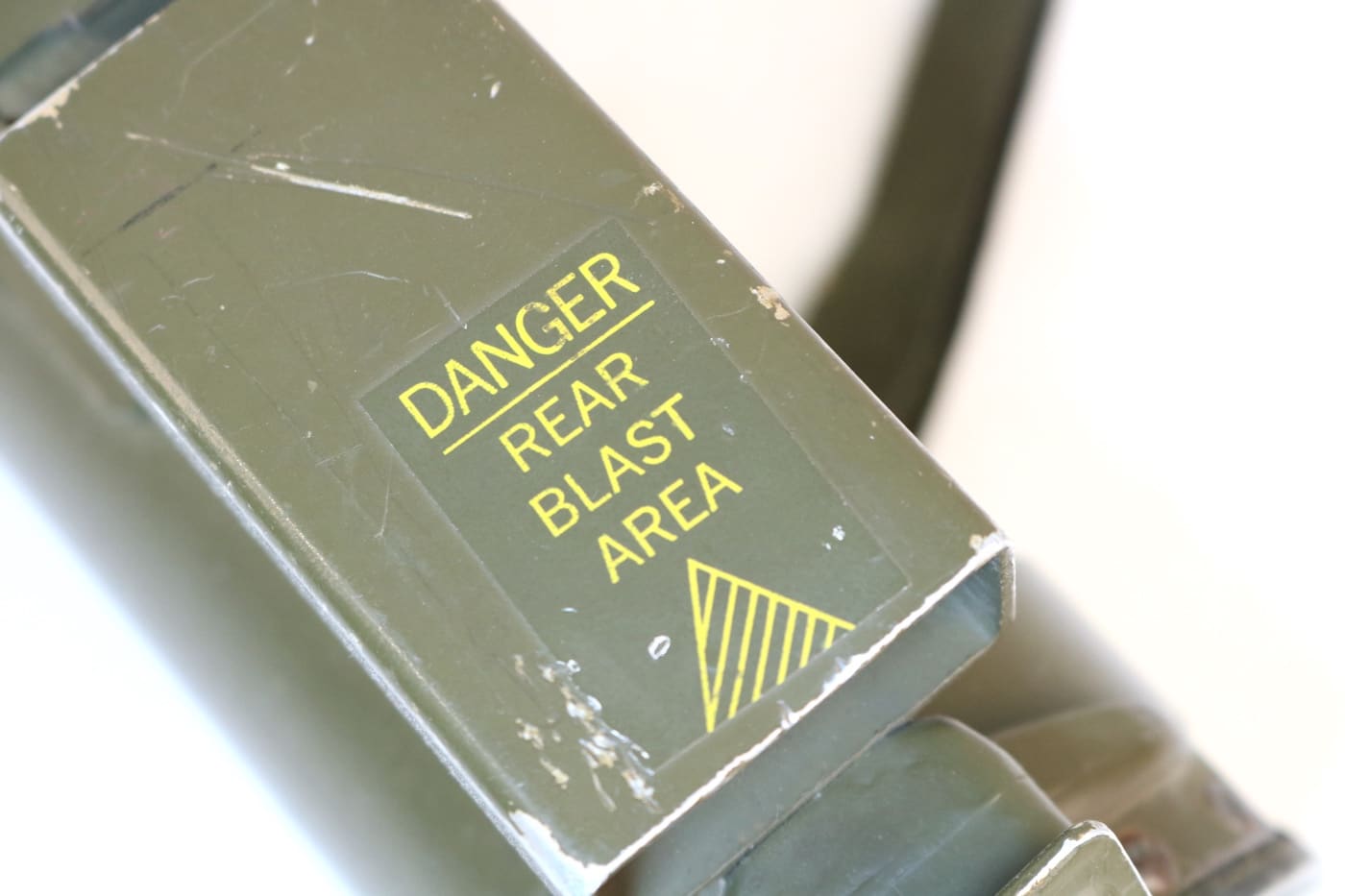
The LAW rocket has a wicked backblast. You really don’t want to shoot this thing in confined spaces or enclosed area.
The internal tube is aluminum, while the outside sort is fiberglass.
When collapsed, the LAW is waterproof and 25 long.
Once extended and ready to fire, the M72 is 35 long.
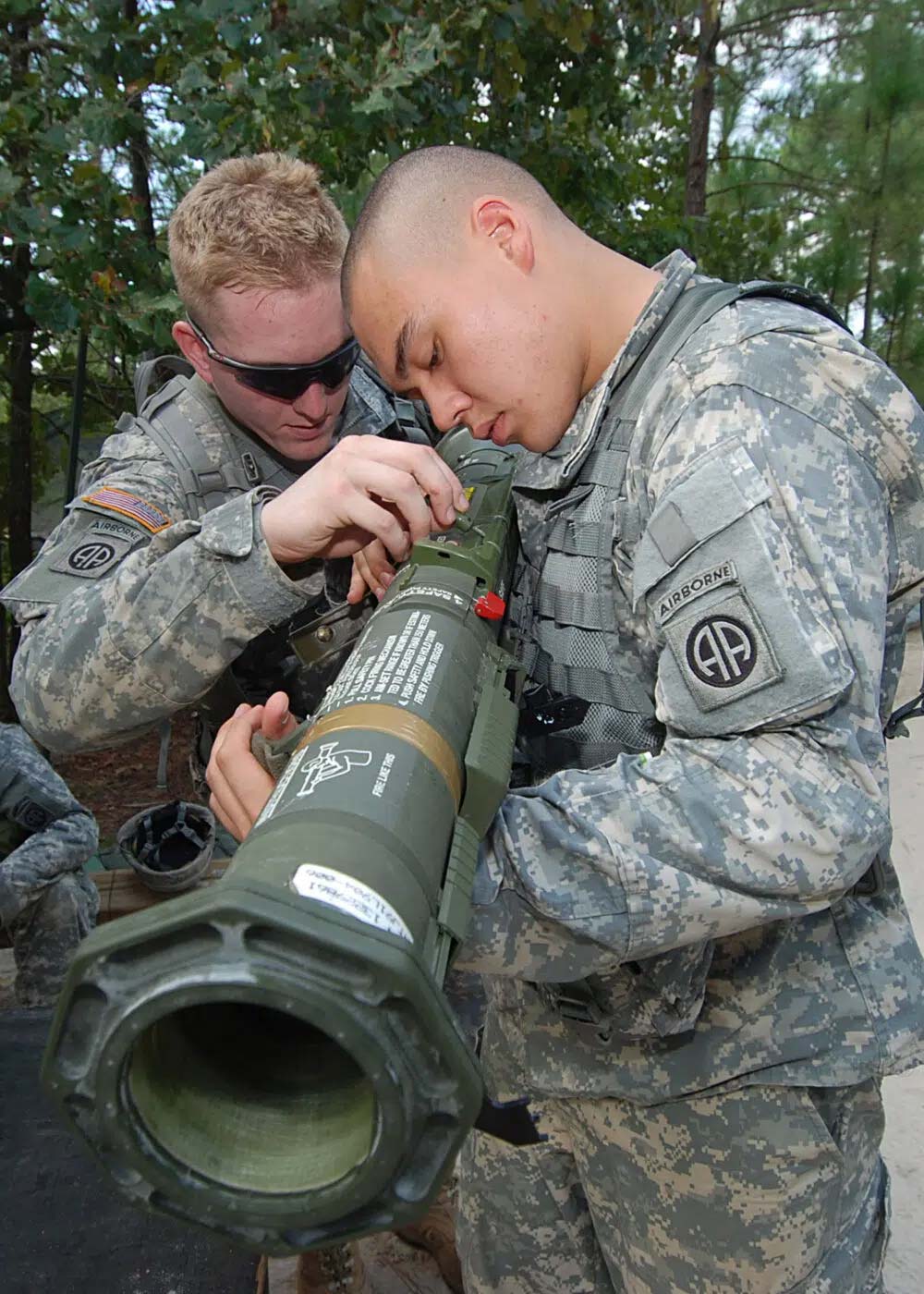
Spc. Alex Raske (left) and Pfc. Phillip Nelson get familiar with the M136 AT4 anti-tank weapon. While more effective against tanks, it is also heavier than the M72. Image: Staff Sgt. Mike Pryor/U.S. Army
The weapons minimum arming range is ten meters.
This allows the front cap to fall off of the launcher.
You then grasp the launcher front and rear from the top and extend it vigorously.
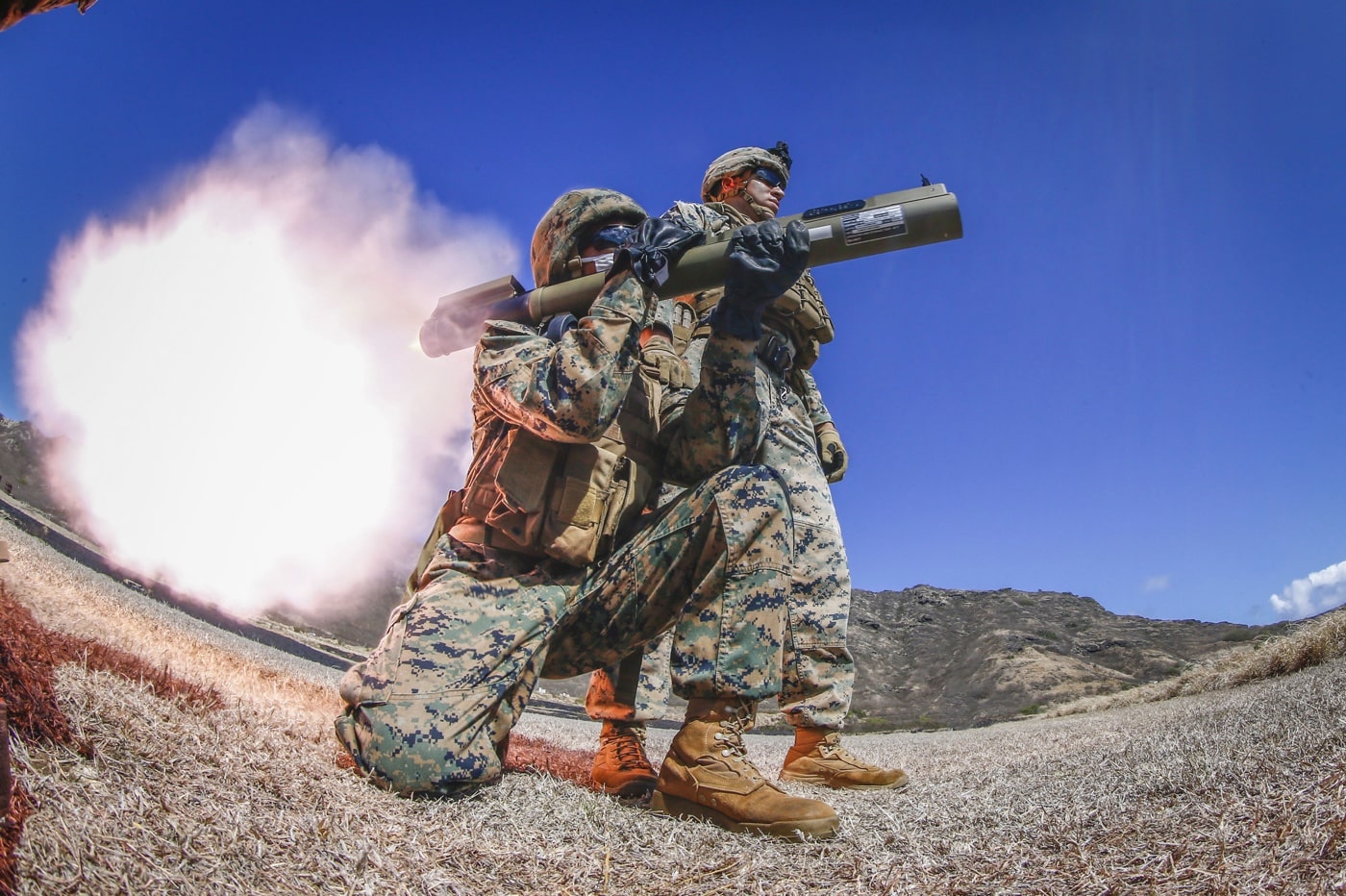
A Marine fires an M72 light anti-tank weapon during training at Marine Corps Base Hawaii, Aug. 13, 2020. Image: Sgt. Luke Kuennen/U.S.M.C.
The inner tube telescopes and will lock in place.
The front and rear sights are spring-loaded and pop up of their own accord.
Now rotate the weapon onto the firing shoulder, taking care to ensure that the backblast area is clear.
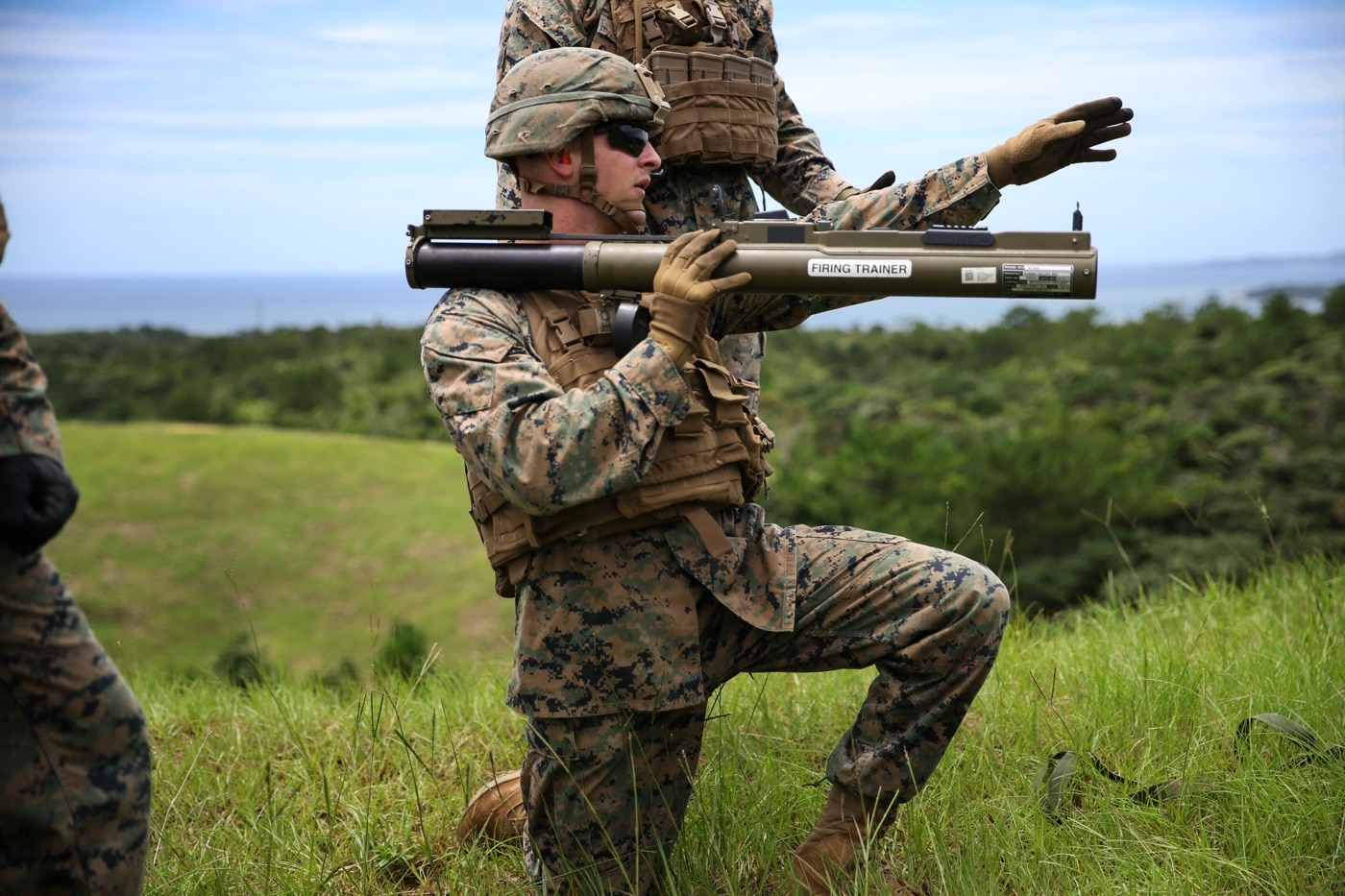
Lance Cpl. Jude Wheeler fires at targets during a high-explosive weapons range on Camp Schwab, Okinawa, Japan in June of 2020. Image: Cpl. Donovan Massieperez/U.S.M.C.
The backblast is considered dangerous to bystanders out to about 40 meters.
With the weapon pointed downrange, you then pull the firing mechanism forward using the weak hand.
The LAW is now armed and ready to fire.
Once fired, the launcher is considered disposable.
No one is reloading these with a fresh anti-tank rocket.
Replacing the end caps is fairly self-explanatory.
The end result was theSwedish AT4.
The transition was supposed to start in 1983, but the old LAW just wont die.
The AT4 weighs between 15 and 18 pounds depending upon the variant and is 40 long.
That means an operator can carry two LAWs for the same size and weight burden of a single AT4.
As a result, the LAW remains in service even today.
The LAW and AT4 were both designed with the antitank role in mind.
However, the tactical demands of the Global War on Terror involved relatively few antitank engagements.
Its hard to beat the munition for high explosive rocket that a soldier or Marine can easily carry.
Despite being nearly 65 years old, the M72 shows no sign of being replaced anytime soon.
Sometimes LAWs just dont need to be changed.




